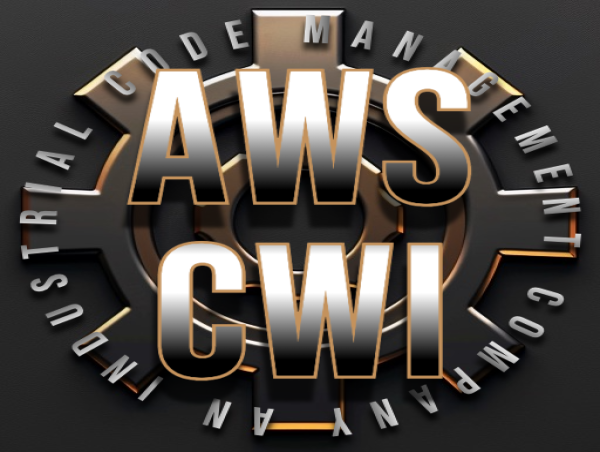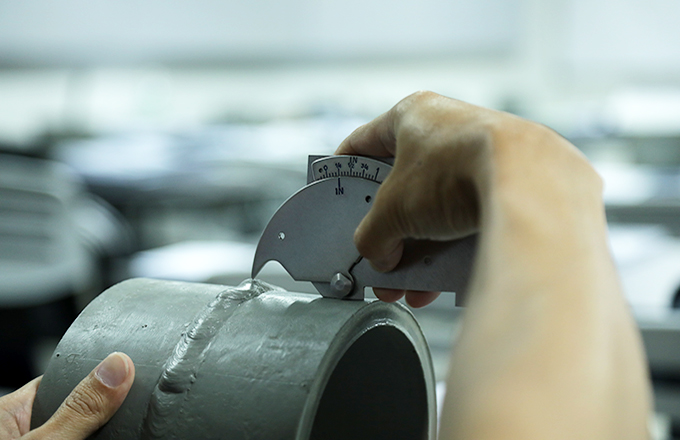How to Prepare for a Welding Inspection Milwaukee Professionals Recommend
How to Prepare for a Welding Inspection Milwaukee Professionals Recommend
Blog Article
Understanding the Importance of Welding Evaluation in Ensuring Structural Integrity and Safety And Security Throughout Different Industries
Welding inspection is a vital procedure that safeguards structural integrity and safety throughout varied sectors. As we discover the complexities of welding assessment, the inquiry arises: what are the most crucial elements that contribute to effective evaluation procedures?
Duty of Welding Examination
While the integrity of welded structures is paramount to safety and performance, the role of welding evaluation can not be overemphasized. Welding examination works as an essential quality control procedure that ensures the adherence to established standards and specs throughout the welding procedure. By systematically evaluating welds for defects, disparities, and non-compliance, examiners play an important function in protecting the integrity of structures throughout numerous sectors.
Welding assessments encompass a series of activities, from pre-weld analyses to post-weld analyses. These evaluations not just recognize prospective problems before they rise however also boost the total dependability and lifespan of bonded elements. Welding Inspection Milwaukee. Inspections aid to confirm the skill and expertises of welders, guaranteeing that welding treatments are implemented properly and materials are compatible
In addition, a strenuous inspection procedure cultivates compliance with regulatory needs and market standards, decreasing the danger of catastrophic failings. By promoting a culture of safety and security and accountability, welding inspection adds considerably to both functional and financial efficiencies. In amount, the role of welding inspection is crucial, as it underpins the high quality, safety, and long life of welded frameworks vital to modern-day facilities and sector.
Sorts Of Welding Inspections
Recognizing the different kinds of welding evaluations is essential for keeping the quality and safety and security of bonded structures. Welding inspections can be classified into numerous types, each serving a certain function in the analysis process.
Visual examination is one of the most essential kind, involving a cautious assessment of the welds with the nude eye or via zoom. This technique helps determine surface area flaws such as splits, incomplete fusion, or excessive spatter.
These approaches allow examiners to assess the stability of welds without jeopardizing the material's structure. Ultrasonic testing makes use of high-frequency audio waves to discover interior problems, while radiographic testing employs X-rays or gamma rays to envision interior weld qualities.
Destructive testing, though much less common, includes physically checking examples to comprehend the weld's mechanical residential properties. Each kind of inspection adds to a comprehensive analysis, ensuring that welding satisfies sector standards and security needs.
Industry Requirements and Regulations
Developing sector standards and laws is important for guaranteeing the safety and reliability of bonded frameworks. These standards work as benchmarks for efficiency, safety and security, and quality, guiding producers and assessors in the execution of welding processes. Different organizations, such as the American Welding Culture (AWS) and the International Company for Standardization (ISO), have actually established thorough criteria that determine treatments for welding methods, credentials of welders, and inspection techniques.
Compliance with these policies not just boosts the top quality of welds yet additionally reduces dangers connected with architectural failings. Particular codes, such as the ASME Boiler and Pressure Vessel Code, summary demands for the construction of stress vessels, guaranteeing they can hold up against functional anxieties. Furthermore, nationwide and regional guidelines usually mandate adherence to these sector criteria, enhancing their relevance across industries like construction, aerospace, and automotive manufacturing.
Normal updates to these criteria show improvements in innovation and welding methods, ensuring that safety measures continue to be pertinent. Therefore, a detailed understanding and execution of these requirements is crucial for welding professionals, fostering a culture of safety and high quality in welded structures.
Consequences of Poor Inspections
Poor inspections can lead to severe repercussions in the welding industry, undermining the extremely requirements click here for info and guidelines developed to guarantee safety and security and structural stability. The repercussions of bad evaluations can materialize in different kinds, from instant security dangers to lasting architectural failings.
Furthermore, inadequate evaluations can tarnish a business's online reputation and lead to legal repercussions, consisting of site web penalties and lawsuits. Non-compliance with recognized requirements not only jeopardizes the honesty of jobs however also diminishes customer depend on in the brand. In addition, the financial implications can be astonishing, encompassing both straight costs connected to fixings and indirect expenses such as shed company possibilities and boosted insurance policy premiums. Inevitably, the implications of bad evaluations extend past private jobs, impacting industry-wide standards and public assumption, hence highlighting the essential requirement for extensive and reliable welding examinations.
Best Practices for Effective Assessments
Reliable welding assessments are critical to ensuring the stability and safety and security of welded structures. To accomplish optimum results, inspectors have to comply with a number of finest practices that enhance the examination procedure.

Secondly, inspectors ought to have the needed credentials and certifications relevant to the welding processes and materials being analyzed. Recurring training and professional development are vital to staying updated on industry requirements and technical developments.
In addition, using appropriate assessment devices and techniques, such as visual assessments, ultrasonic testing, and radiographic assessments, is vital for spotting defects that could compromise architectural integrity.
Last but not least, thorough documentation of the evaluation process is essential. By executing these ideal practices, organizations can significantly boost the effectiveness of their welding assessments and make certain safe, reputable procedures.
Final Thought

In final thought, welding assessment is important for keeping structural honesty and security throughout different sectors. Focusing on effective welding evaluations is important to ensure the security of workers, assets, and total operational stability.

As we explore the ins and outs of welding inspection, the concern emerges: what are the most critical aspects that add to effective evaluation procedures?
Welding inspection serves as an essential quality control procedure that ensures the adherence to established requirements and requirements throughout the welding procedure. In sum, the function of welding inspection is important, as it underpins the quality, security, and longevity of welded structures necessary to modern-day infrastructure and market.
Various organizations, such as the American Welding Culture (AWS) and the International Company for Clicking Here Standardization (ISO), have developed extensive standards that dictate procedures for welding practices, qualification of welders, and evaluation techniques.
Ultimately, the ramifications of poor evaluations prolong beyond individual projects, affecting industry-wide criteria and public assumption, hence stressing the critical need for extensive and efficient welding evaluations.
Report this page